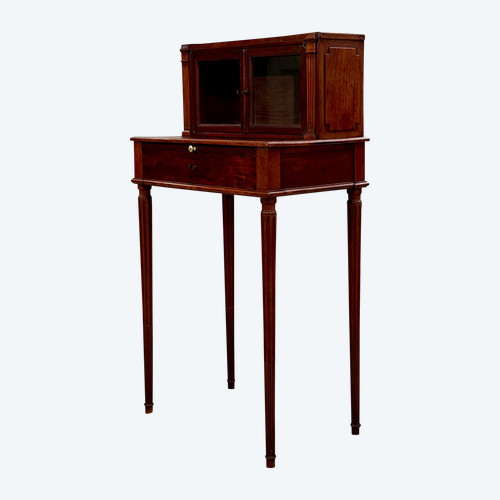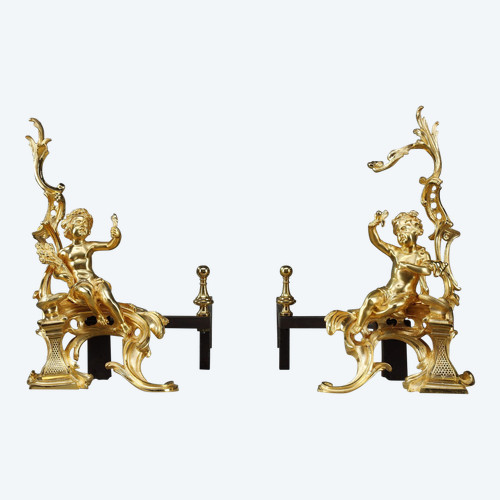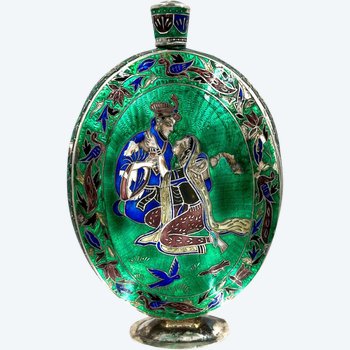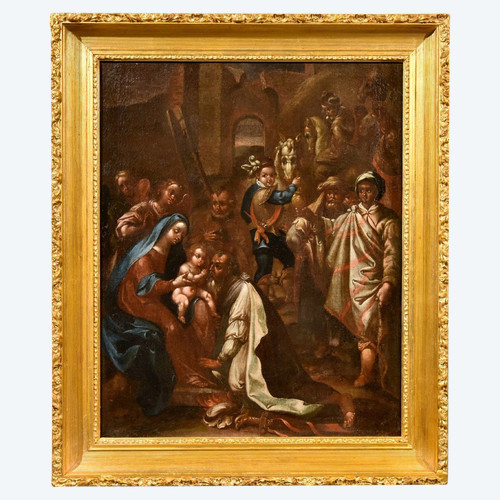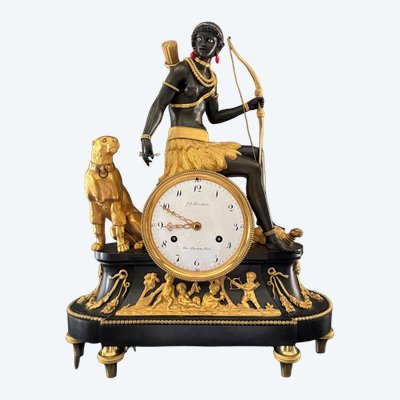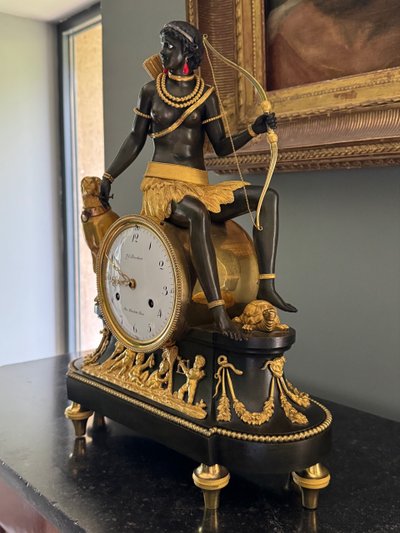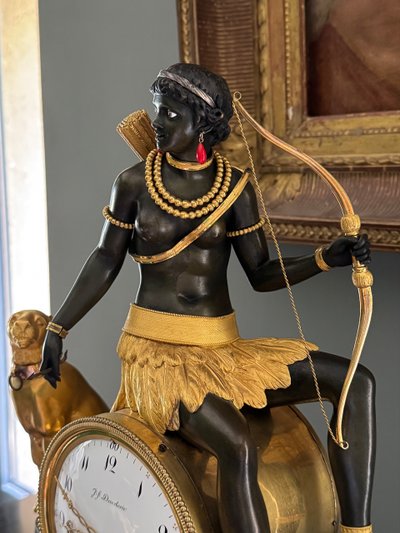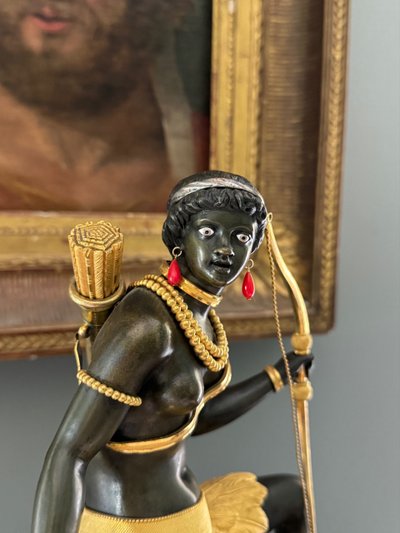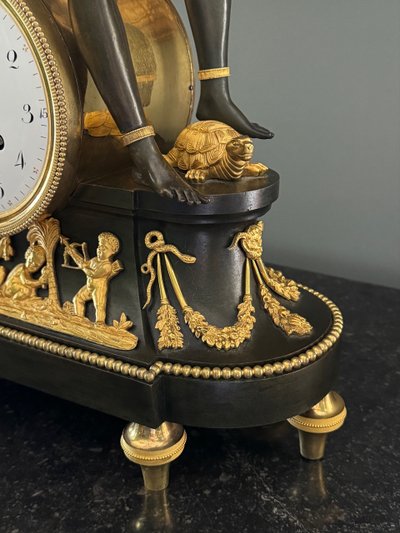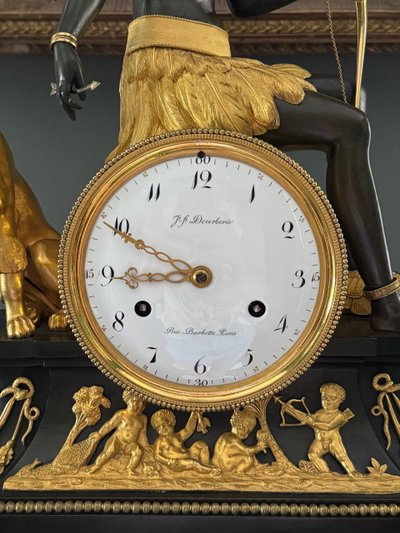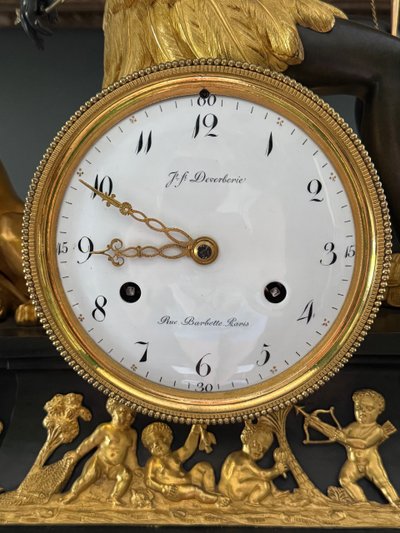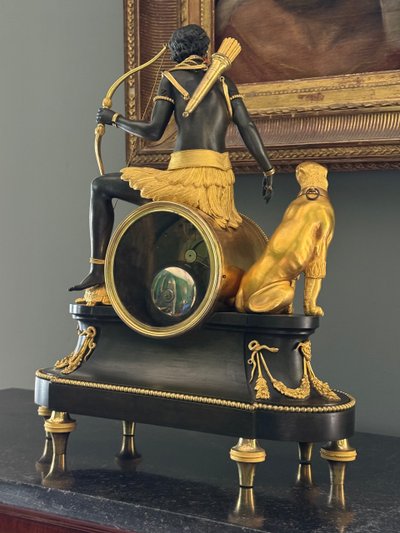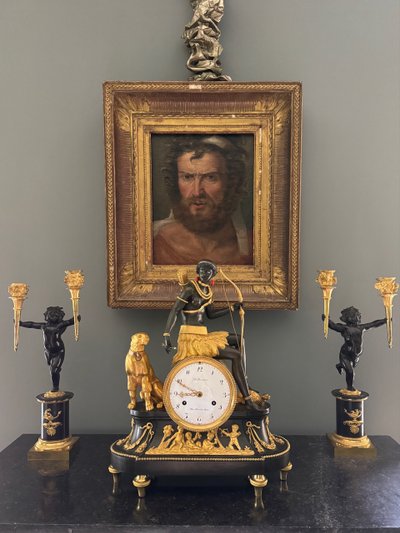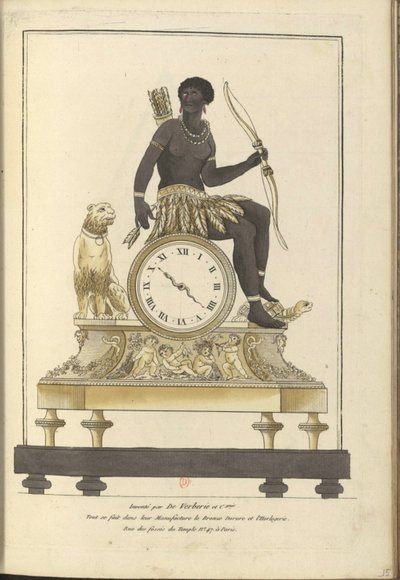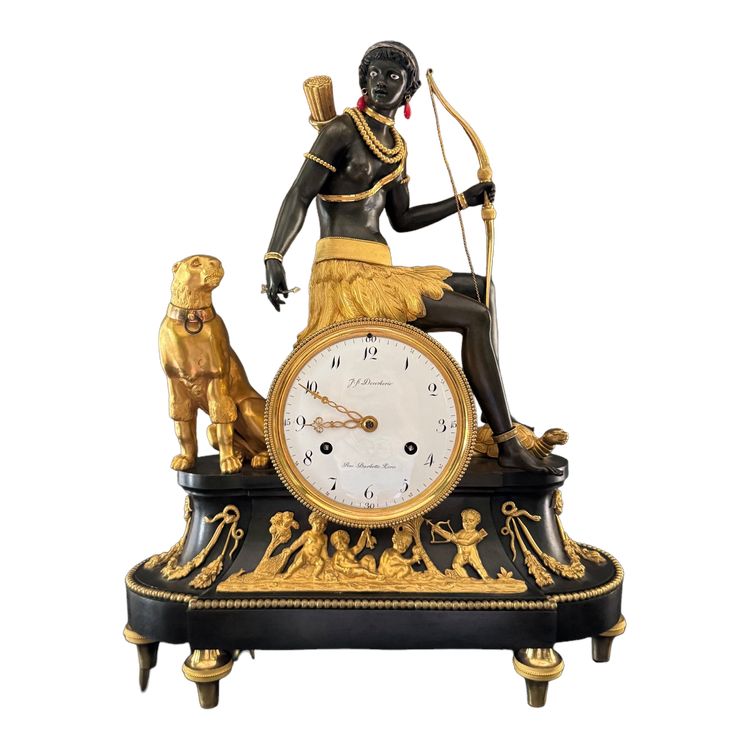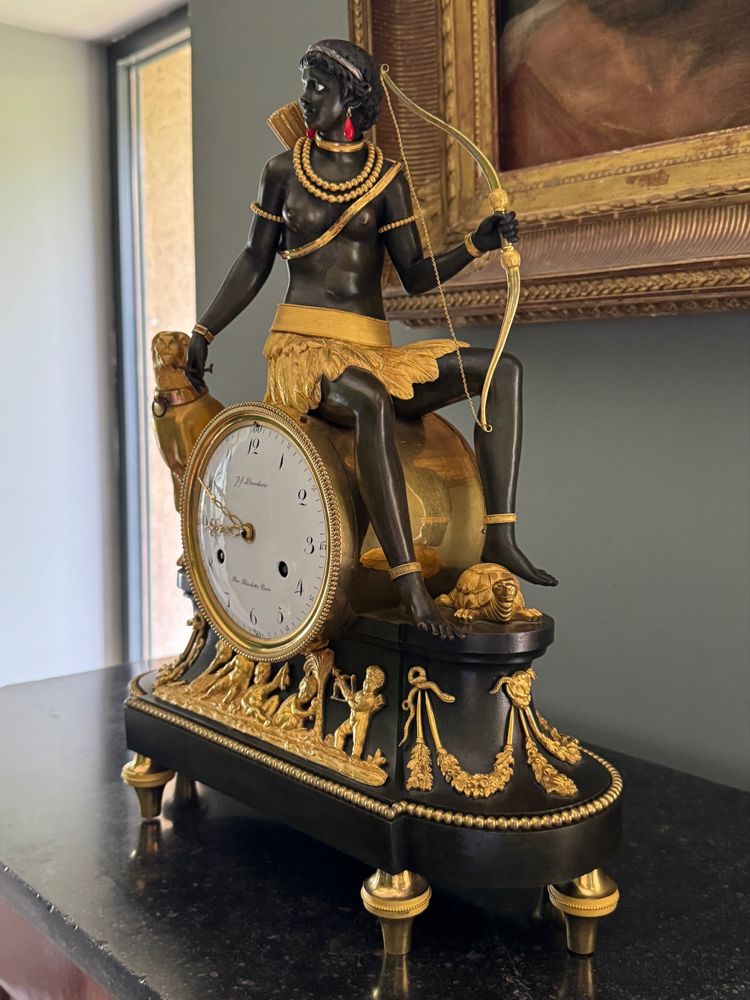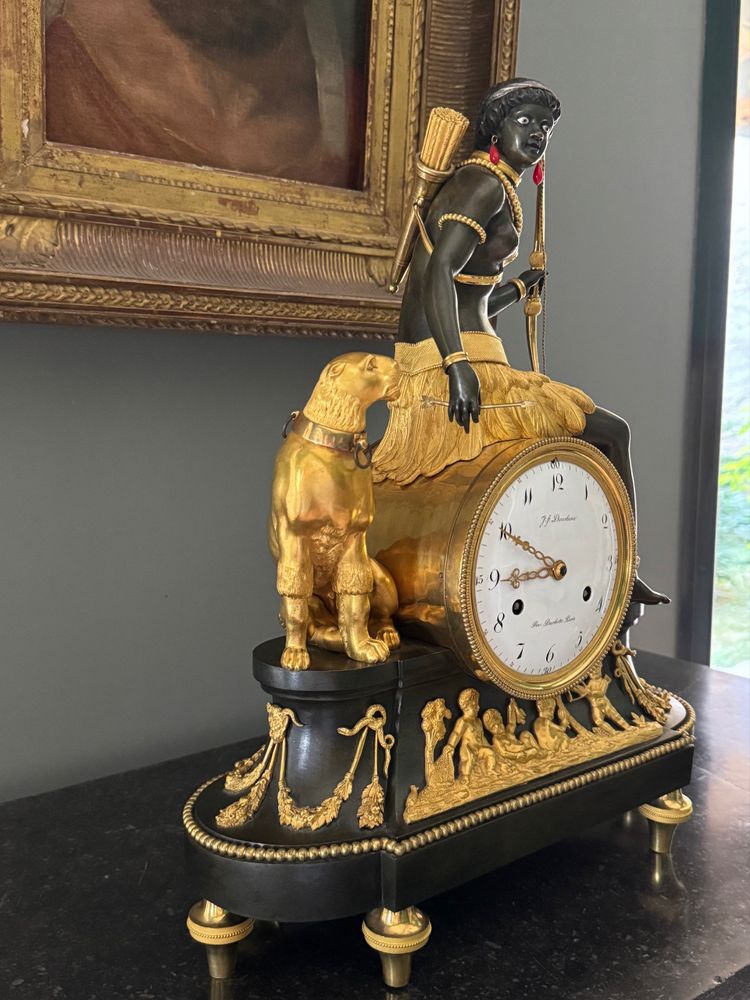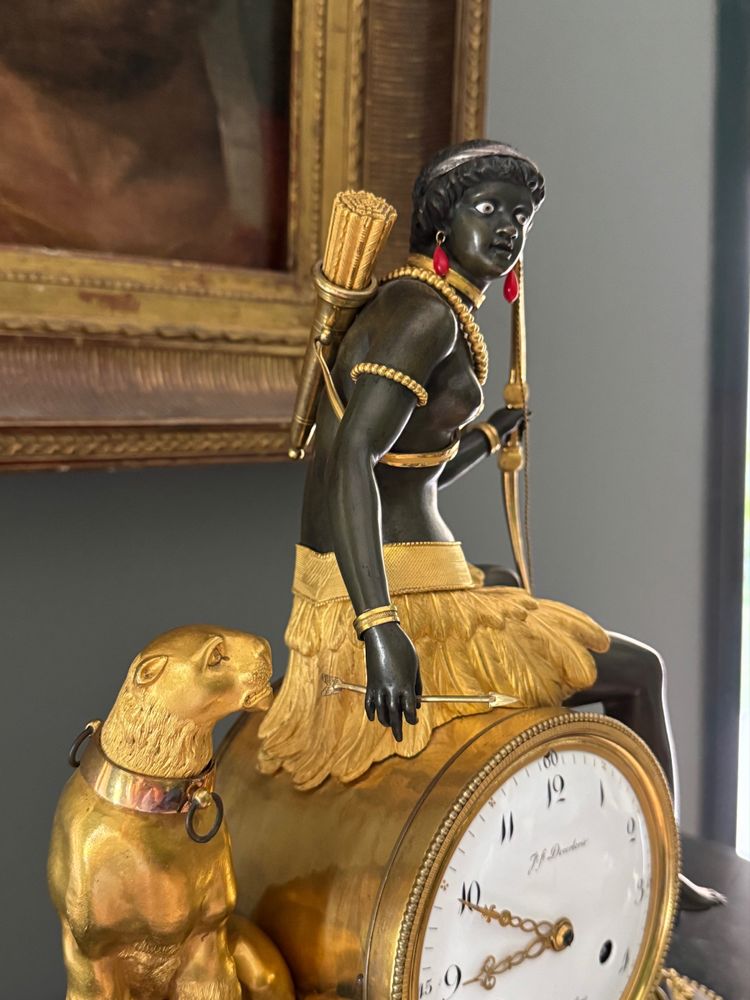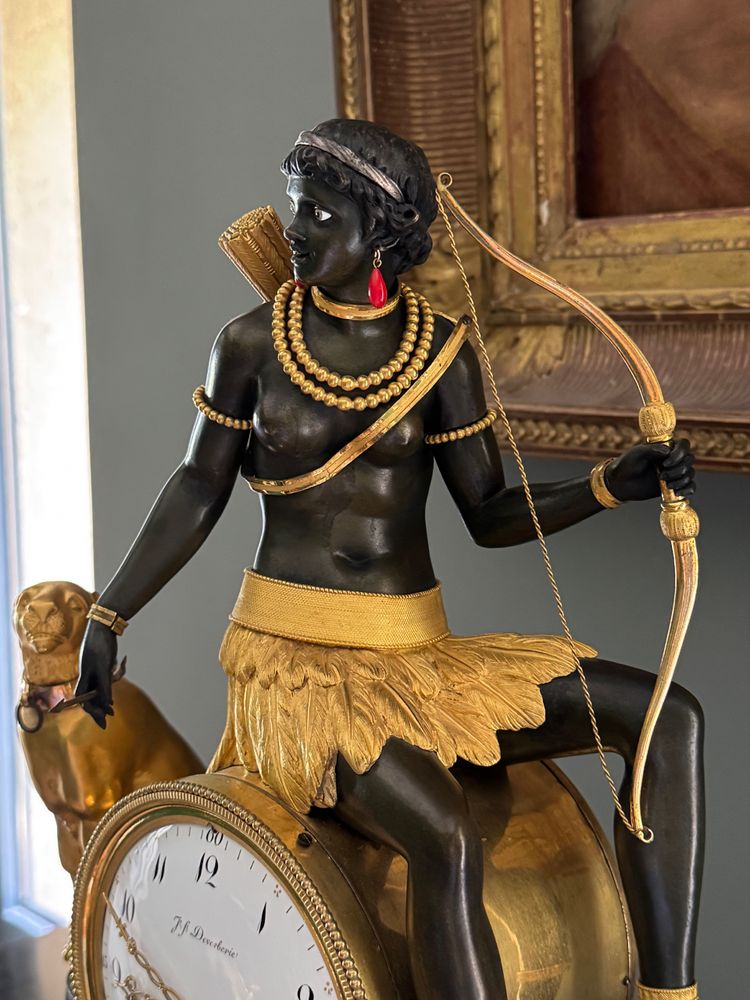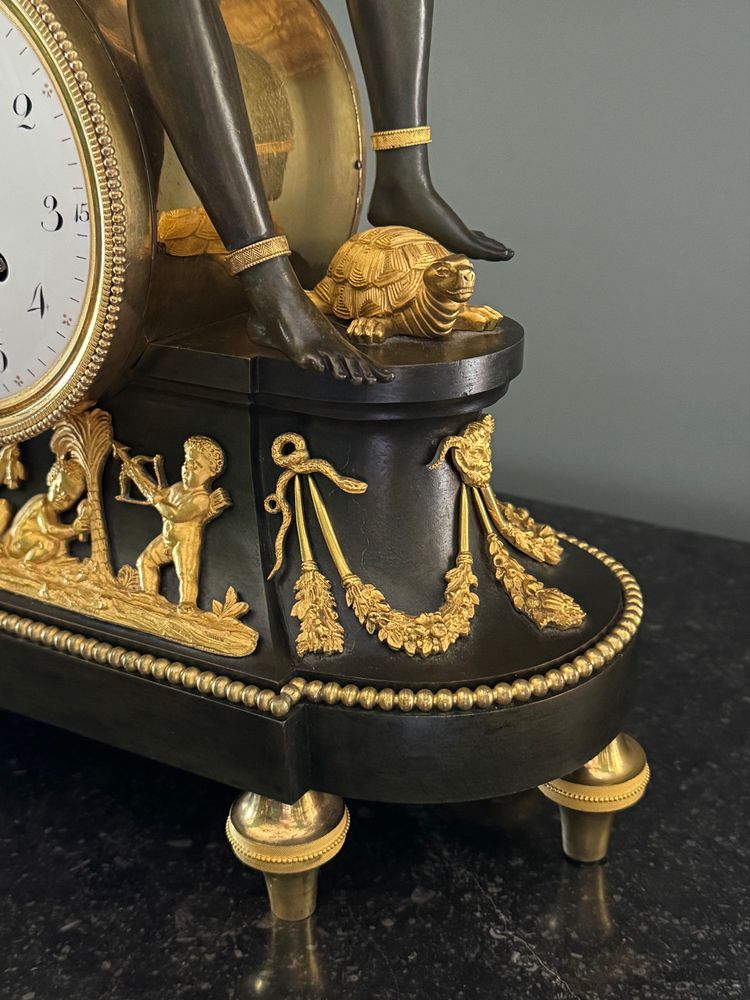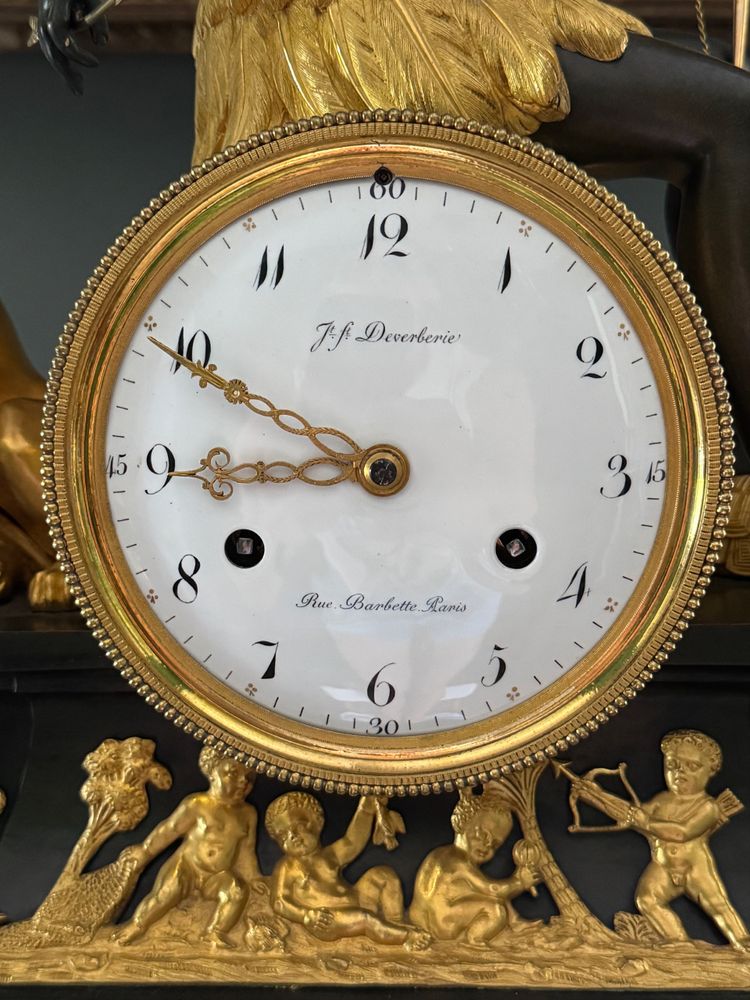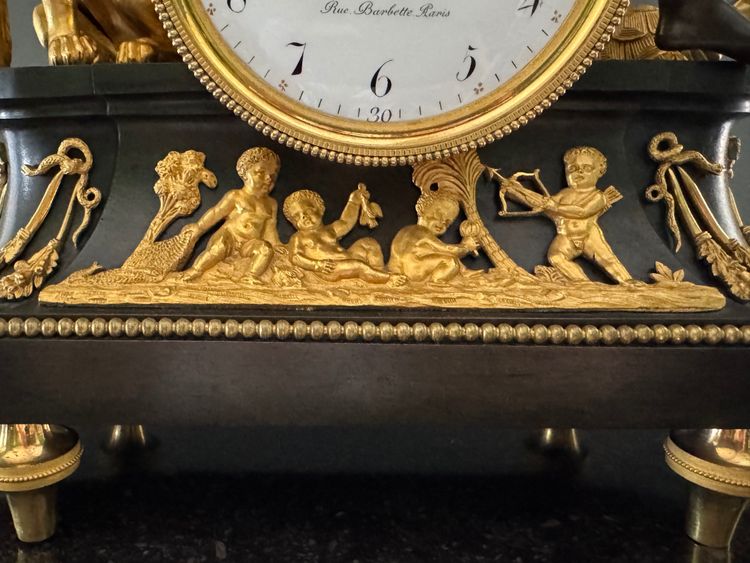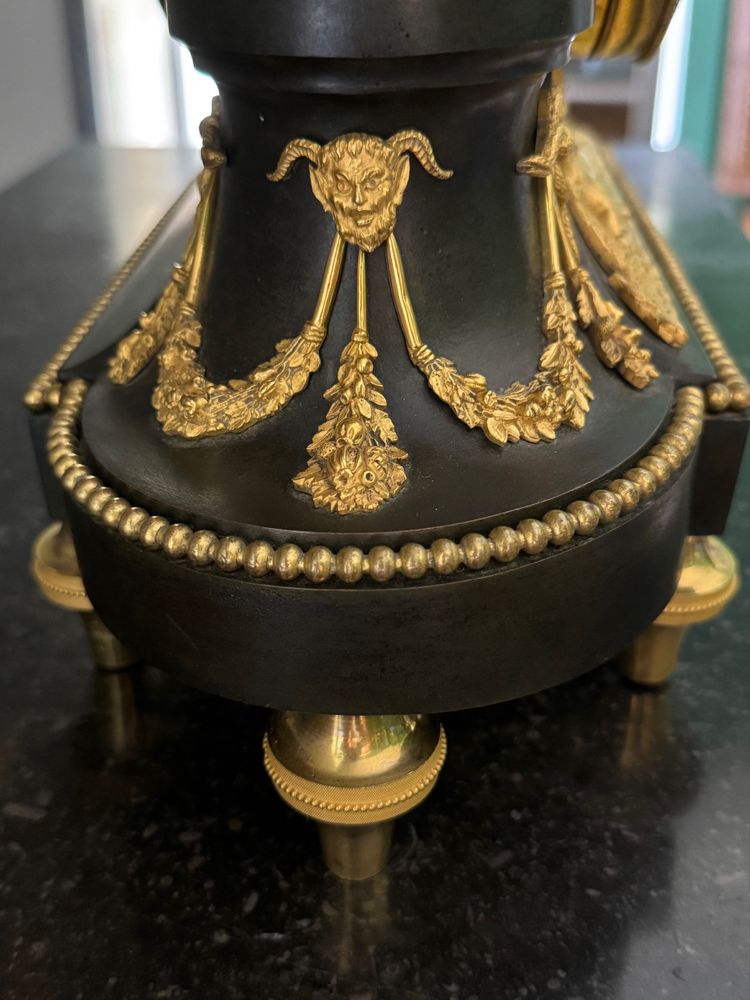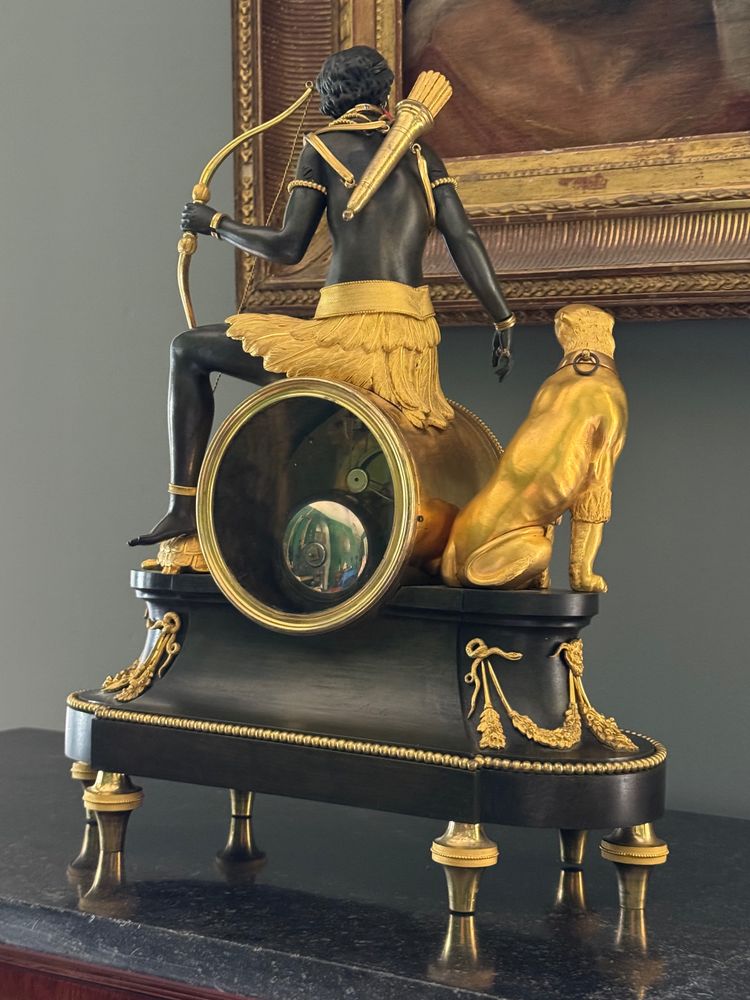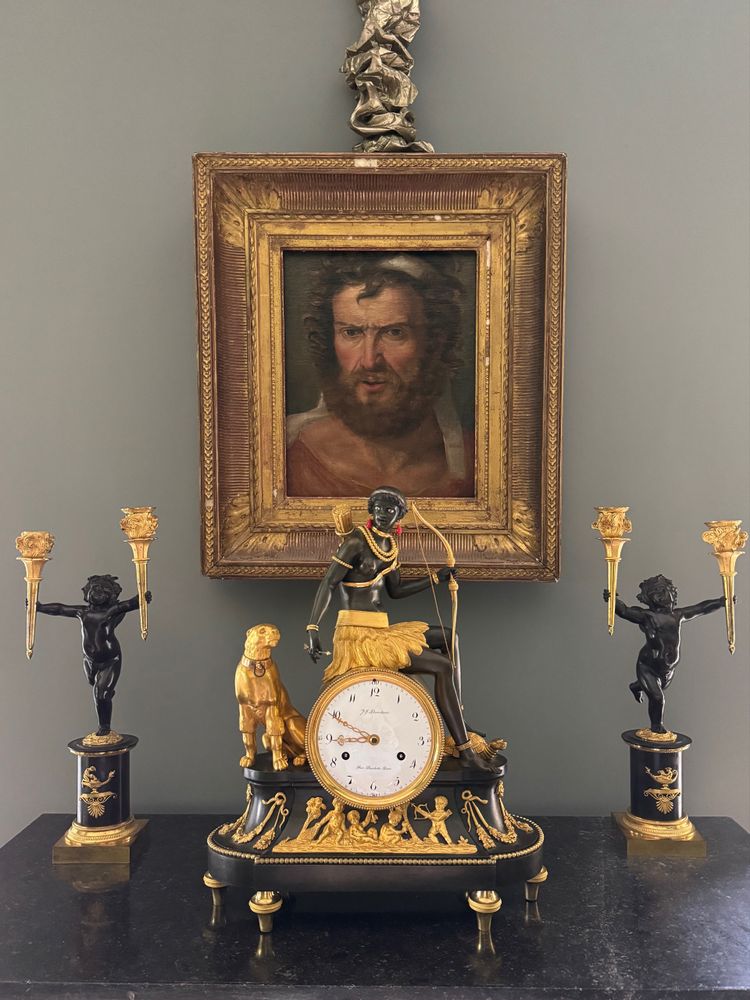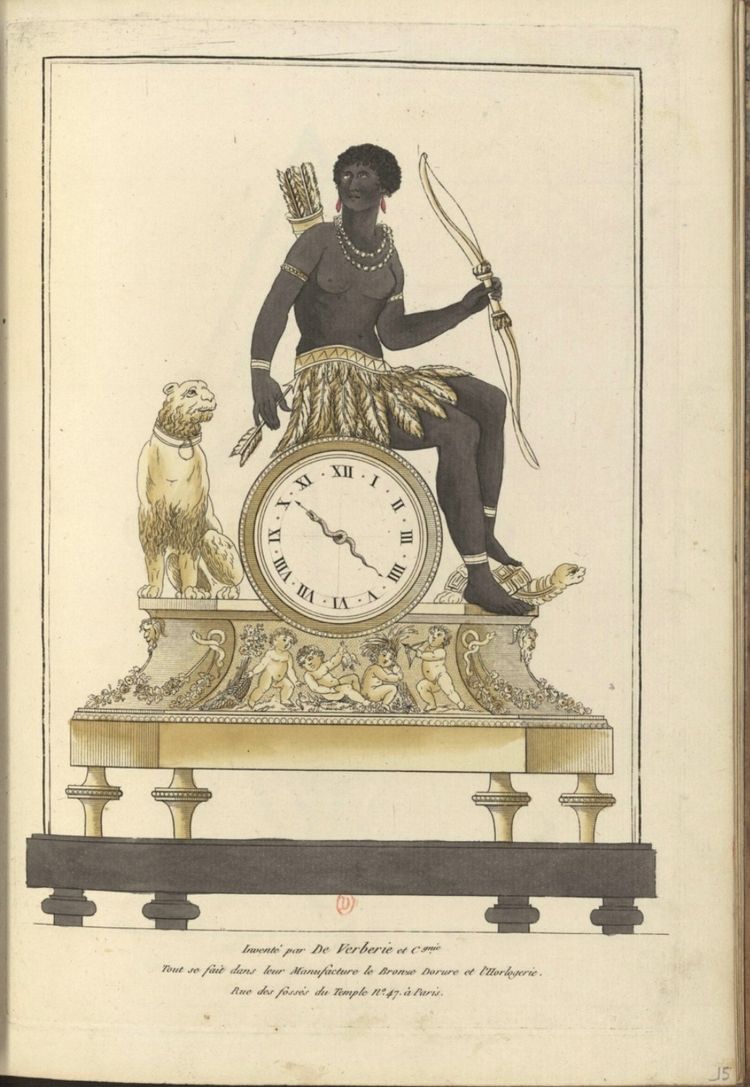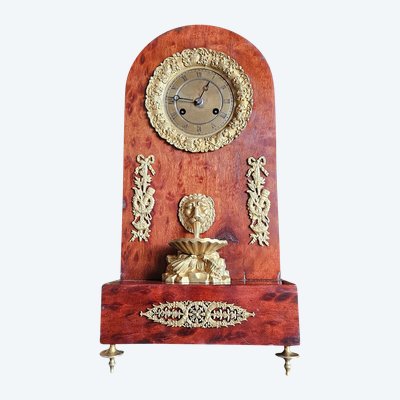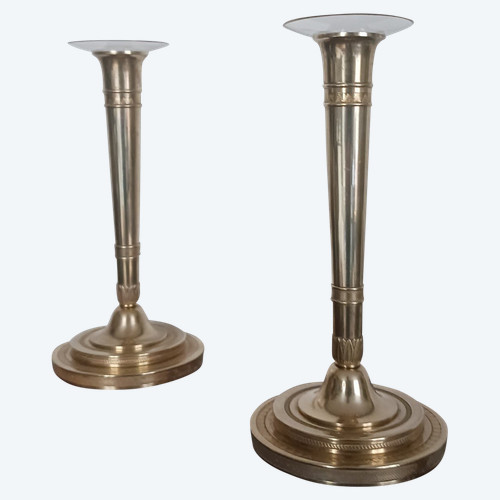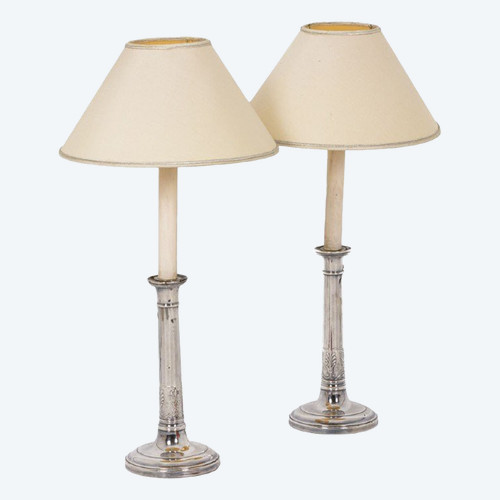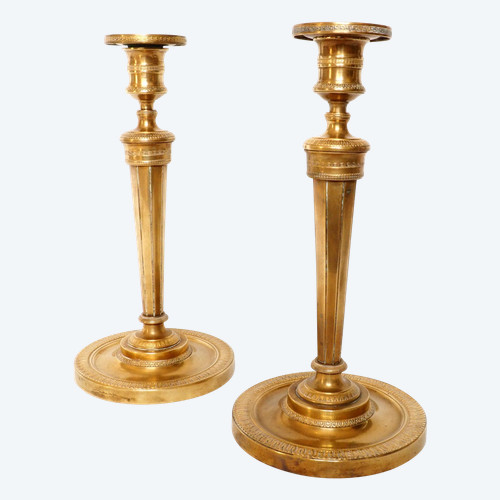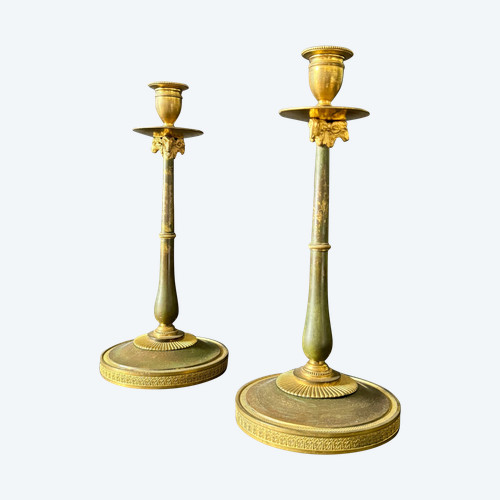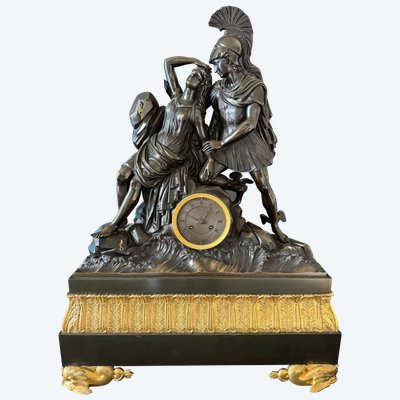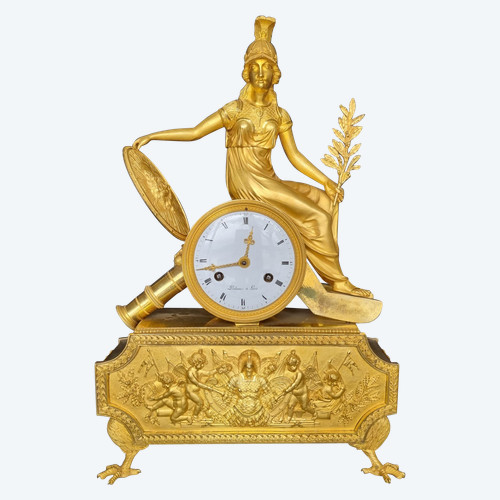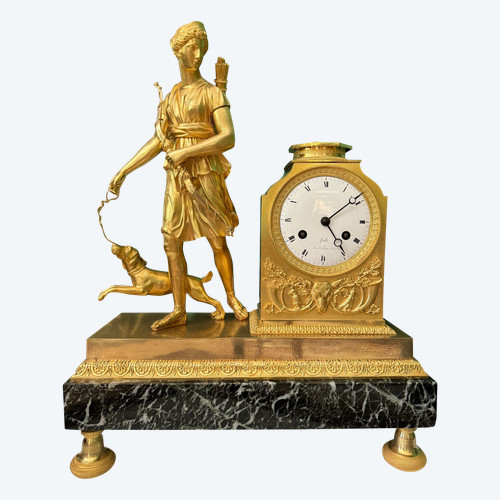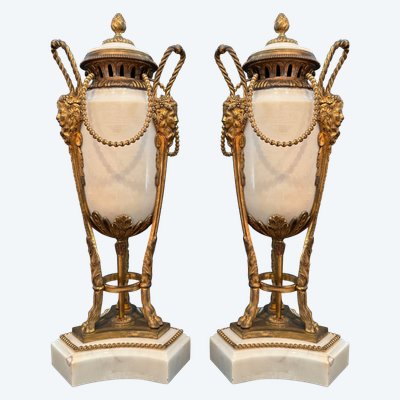This description has been translated and may not be completely accurate. Click here to see the original
Exceptional clock by Jean Simon Deverberie, from the very first models by the Master, made in 1800 when he was working on rue Barbette in Paris.
Superb enamelled dial by Jean Joseph Coteau, the greatest enameller of his time, with gold leaf inlays, called paillons émaillés, in the form of trefoils. Coteau used this technique at the Manufacture de Sèvres, adapting it for the most precious clocks.
The "Holy Grail" of "Africa" clocks, also known as the "African Huntress", this model is entirely original and in an exceptional state of preservation, made of finely chased gilded bronze and patinated bronze.
This clock belongs to a genre of its own, and its charm and delicacy can only be appreciated by associating it with the atmosphere of the period.
During the second half of the 18th century, a return to the virtues of nature animated society, inspired by Jean-Jacques Rousseau. Novels such as Paul et Virginie (1788), Atala (1805) and, earlier, the adventures of Robinson Crusoe (1719), all contributed to this craze.
Of all the known models of the Africa clock, I present here the most exceptional, not only for its quality of execution, but also for the signature on its dial: "It.Ft.Deverberie, rue Barbette à Paris", for Inventaire Fecit Deverberie.
This certifies that it was made by the Master himself (as other bronzemakers copied it from the same period until 1830).
The address on rue Barbette (in the Marais district) tells us when it was made: according to the almanach du commerce de Paris, Deverberie worked at this address from 1800 to 1804.
He had also deposited the preparatory drawing for this clock with the Cabinet des Estampes of the Bibliothèque de France in 1799. For this factual reason, the Africa clock may not be from the Directoire period (as some sales descriptions may mention), but from the Consulate period.
Seated on the dial, the African huntress wears her decrepit hair enhanced by a silver headband. Dressed in a finely chased feather loincloth, she contrasts this with her precious jewelry: a double-strand pearl necklace, wrist, arm and ankle bracelets, and earrings.
Her fixed gaze reveals enamel eyes with pinkish irises (the eyes, when the model is produced by Deverberie, are always circled in pink or blue).
His bow in his left hand, an arrow in his right and his quiver of arrows on his back give him a conquering stance, but one that is also imbued with grace and purity.
At her feet, a turtle, symbolizing calm, wisdom, determination and sovereignty.
Behind her, the lioness, symbolizing courage, fighting spirit, luck and inner strength.
These two companions complete this symbolic evocation of Africa: wise and wild.
The patinated bronze pedestal flares out towards the base, which is itself highlighted by a string of pearls. The base itself is underlined by a string of pearls, and features a gilded, chased-bronze love motif, depicting hunting, fishing and gathering.
On each side, a garland of flowers and fruit held in place by snakes, and a mascaron of fauna complete the decoration.
The ensemble rests on six finely chased bronze and gilded "toupie" feet.
Perfect condition.
Original "ground gold" gilding and patina.
Wire movement entirely overhauled by an art watchmaker.
Consulate period. 1800
Dimensions:
Height: 45cm
Width: 36cm
Depth: 14cm
Jean Simon Deverberie ( 1764-1824 )
Jean-Simon Deverberie was one of the most important Parisian bronzemakers of the late 18th century and the first two decades of the following century.
He seems to have specialized almost exclusively in the creation of clocks, torches and candelabras, adorned with exotic figures, particularly Africans; he registered numerous models of the so-called "nègre" clocks, notably the "Africa", "America" and "Indian and Indian embracing" models (the drawings are preserved in the Cabinet des Estampes at the Bibliothèque nationale in Paris and in the Bibliothèque Doucet). He set up his studio successively on rue Barbette in 1800, rue du Temple in 1804, and rue des Fossés du Temple between 1812 and 1820.
Jean Joseph Coteau ( 1740-1812 )
Known as the most eminent enameller of his time, specialized in the decoration of clock faces and metal objects. He collaborated with most of the great watchmakers of his time.
Jean Joseph Coteau, a native of Geneva, became a master enameller-painter at his city's Académie de Saint-Luc in 1766. He arrived shortly afterwards in Paris, where he was listed in the registers of the parish of Saint-André-des-Arts, and set up a workshop on rue Poupée in 1778.
Enameller
From 1779, he invented a new decorative technique: paillon émaillé su
Ref: ND34DIQVC7

